 |
Creating Customer Satisfaction for 37 Years! |
|
|
|
|
|||
|
|
|||
twinwall &
multiwall polycarbonate panel installation

 |
 |
 |
 |
 |
 |
 |
 |
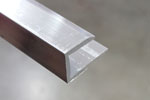 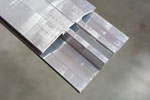 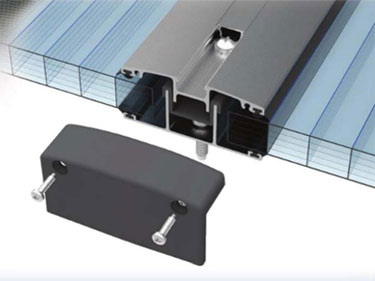 |
| MULTIWALL | FASTENERS | TAPE | QUOTES | INSTALLATION ? | SHIPPING COSTS | RIDGE CAPS | POLY CHANNEL | ALUMINUM CHANNEL |
TWINWALL POLYCARBONATE GENERAL INSTALLATION INFORMATION
BASIC INSTRUCTIONS
'click here' for our prices
|
1. If you have already built your structure with support rafters or wall joist on even centers (i.e. 2', 4', etc) and are using "H" channel, you will have to trim each polycarbonate sheet by approximately 1-1/2". This is because the stock width of the sheet is either a standard 4' or 6' wide. "H" channel has a rib that separates the two sides of the channel. The rib is about 1/2" to 1" wide depending on whether you use standard or snap "H" channel. Before you cut, be sure to measure the distance between each location of "H" channel for correct distance. Other options to cutting the twinwall include (A) using perlins horizontally across your rafters or joists, fasting "H" channel perpendicular to perlins. (B) Design your greenhouse with rafters or joists spacing wide enough for full standard twinwall width. (3) cap the joints between twinwall sheets with a 1 x 4, using silicone caulk under each edge of the 1 x 4 and a screw through center. 'click here' for more assembly information. 2. Always install the sheets with the flutes oriented vertically, When used as a roof covering, design with at least a minimum 5 to 10 degree slope, never level. 3. Remember to allow for expansion and contraction in every installation. Bronze and grey panels change more in size. Use extrusions that allow for sufficient edge engagement plus the expansion allowance. Usually, a pre drilled hole approximately 1 size larger than the screw you were using is enough. 4. Panels can be cut with protective masking in place with a fine tooth saw or sharp knife. Remember to remove the masking prior to final fixing in place. Chips from cutting should be blown out of the flutes. 5. The specially treated weather side is identified on the masking. This side must always face the exterior. 6. In vertical Installations, the top flutes should be capped with an extrusion or tape and the bottom capped or tapped per specifications for drainage. 7. Note for 16mm "H" channel: If you want to use "H" channel for joining 16 mm triplewall you must use the "Snap" Profile style. This is a tight fit for 16 mm and more than likely will require that you hold the snap in place with screws through the center of the profile. Apply silicone caulk where the top piece of the "H" channel meets the triplewall before you attach the top piece of the "H" channel. |
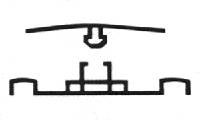

|
There are many aluminum and polycarbonate glazing systems available to use with this material. Aluminum extrusions must be procured from another source or supplier. The polycarbonate extrusions we use are made from the same material. They are available in several profiles including end caps and joining "H" shapes. Also available is a two-piece joining extrusion which consists of a base, which is fastened to the frame and a cap which snaps into place to hold the sheets. These profiles are non-structural and depend on the frame of the structure for support. 'click here' for more detail on profiles STORAGE REQUIREMENTS Crates or sheets should be stored in warehouse areas not exposed to direct heat or light which could make the removal of protective film difficult. Supported, sloped stacking is recommended, but sheets may be stacked up to 3 high on a flat, even, supported surface. PROTECTIVE FILM All panels are supplied with a protective PE film on both sides which should be kept on until the panel is fastened. The U.V. protected side is to be faced towards the sun and is marked with printed film. FABRICATION Twinwall wont crack or split when cut or drilled. Able to stand extreme abuse, its impact strength is 200 times greater than glass and 10 times greater than acrylic. Allow for proper expansion in all drill holes. Do not drill within 1 1/2" from the edge of the sheet. |
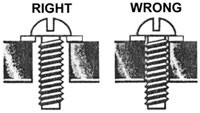
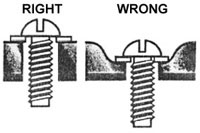
THERMAL EXPANSION
All Polycarbonate materials expand and contract with changes in temperature.
The thermal expansion factor (ASTM D-696) is 3.9 x 10 5. When using
extruded channels for installation it is important that the channel
offers sufficient edge engagement to hold the sheet secure.
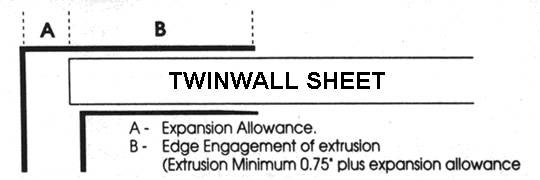
SEALANT
Use silicone sealant compatible with Polycarbonate such as:
#999-A with 1205 Primer, Dow Corning Corp., Mississauga,
Ont. & Midland Mich. or Silglaze N Gesil N, General Electric Co.,
Waterford, NY. (Always check compatibility to Polycarbonate
before using elastomeric adhesive and soft gaskets for dry
installation system.)
|
RESISTANCE OF POLYCARBONATE TO CHEMICAL AGENTS Polycarbonate panels are resistant to some chemicals and products and non-resistant to others. Resistance can be effected by the chemicals concentration, duration of exposure, degree of pressure and temperature at time of contact. Check with your local distributor for complete recommendations.
Twinwall should be protected from abrasion by the installer. After installation, panels should be washed with mild soap or detergent and lukewarm water using only a clean sponge or soft cloth, then rinsed with clean water. Fresh paint, grease, and smeared glazing compounds maybe removed before drying by rubbing lightly wit a good grade of naptha or isopropyl alcohol followed by a final wash with mild soap or detergent and final rinse.
'click here' for loading and bend radius information |
![]()
![]()
![]()
![]()
| Copyright 2019, All Rights Reserved Including Page and Website "Look & Feel" |
Greenhouses Etcetera
"an EncepCo Company"
![]()

PO BOX 914
Benton City, WA 99320
toll free 1-888-966-7877